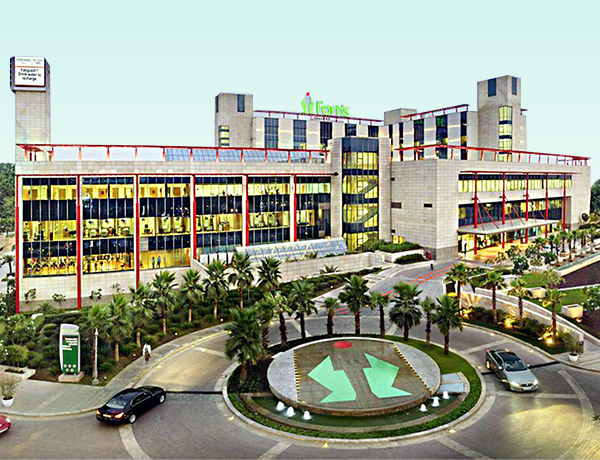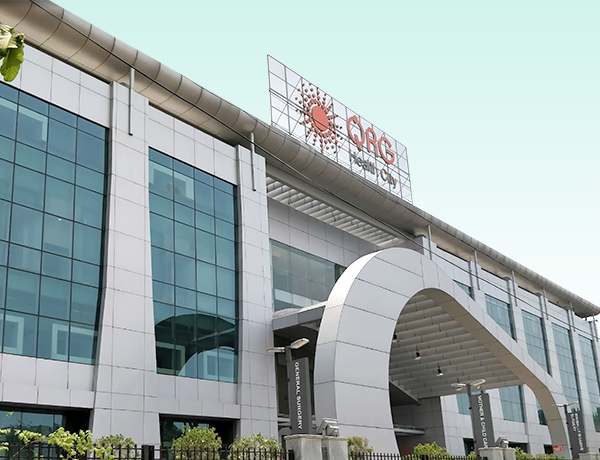Aorta Femoral By-Pass Surgery
Aorta Femoral By-Pass Surgery, also known as Aorto-Femoral Bypass, is a surgical procedure used to treat peripheral arterial disease (PAD) by restoring blood flow to the lower extremities. PAD occurs when there is a build-up of plaque in the arteries, leading to reduced blood flow to the legs and feet. Aorta Femoral By-Pass Surgery involves creating a new pathway for blood to bypass the narrowed or blocked arteries, improving circulation and relieving symptoms such as leg pain and cramping.

Who Needs Aorta Femoral By-Pass Surgery
Aorta Femoral By-Pass Surgery is typically recommended for individuals with severe peripheral arterial disease (PAD) who experience symptoms such as:
- Intermittent Claudication: Pain or cramping in the legs during physical activity that resolves with rest.
- Rest Pain: Pain or discomfort in the legs or feet even at rest.
- Non-Healing Wounds: Wounds on the legs or feet that do not heal or heal slowly.
- Gangrene: Tissue death due to reduced blood flow, leading to blackened or discolored skin.
When to See a Specialist
If you experience symptoms of peripheral arterial disease, such as leg pain, cramping, or non-healing wounds, it is essential to see a vascular specialist or a vascular surgeon. They will conduct a thorough evaluation, which may include physical examination, imaging tests, and vascular studies, to determine the extent of the arterial blockages and recommend the most appropriate treatment, which may include Aorta Femoral By-Pass Surgery.
Procedure
- Anesthesia: General anesthesia is administered to ensure the patient remains unconscious and pain-free throughout the surgery.
- Incision: The surgeon makes an incision in the abdomen to access the aorta, which is the main artery carrying blood from the heart.
- Graft Placement: A synthetic graft, made of durable material such as Dacron or PTFE, is sewn to the aorta above the blockage and then tunneled down through the abdomen and pelvis to the femoral artery in the groin.
- Bypass Creation: The graft is sewn to the femoral artery, creating a bypass around the blocked or narrowed arterial segment, allowing blood to flow freely to the legs and feet.
- Closure: After the bypass is complete, the incisions are carefully closed and sutured.
Road to Recovery
Recovery after Aorta Femoral By-Pass Surgery may involve the following:
- Hospital Stay: The length of hospitalization may vary, but most patients can expect to stay in the hospital for a few days.
- Pain Management: Pain medication is provided to manage post-operative pain and discomfort.
- Monitoring: Patients are closely monitored during the recovery period to ensure the graft is functioning properly.
- Physical Recovery: Patients are encouraged to walk and perform light physical activities to promote circulation and aid in the healing process.
Risk Management
Like any surgical procedure, Aorta Femoral By-Pass Surgery carries certain risks, including:
- Infection at the surgical site.
- Graft failure or blockage.
- Bleeding or hematoma formation.
- Blood clot formation (thrombosis).
- Complications related to anesthesia.
Benefits of Aorta Femoral By-Pass Surgery
- Improved Blood Flow: The surgery restores blood flow to the legs and feet, alleviating symptoms such as pain and cramping.
- Reduced Risk of Complications: By improving blood flow, the surgery can help prevent non-healing wounds and reduce the risk of gangrene and limb amputation.
- Enhanced Quality of Life: Aorta Femoral By-Pass Surgery can significantly improve the quality of life for individuals with peripheral arterial disease, allowing them to engage in daily activities with reduced pain and discomfort.
Frequently Asked Questions
1. Will I need to take medications after the surgery?
Your doctor may prescribe medications to manage blood pressure, cholesterol levels, and blood thinners to prevent blood clot formation and ensure the long-term success of the bypass.
2. How long does it take to recover after Aorta Femoral By-Pass Surgery?
Recovery time can vary depending on individual factors, but most patients can expect to resume normal activities within 4-6 weeks after the surgery.
3. Can Aorta Femoral By-Pass Surgery be performed using minimally invasive techniques?
In some cases, Aorta Femoral By-Pass Surgery can be performed laparoscopically, using smaller incisions and specialized instruments. However, the approach depends on the individual’s condition and the surgeon’s preference.
4. Are there any lifestyle changes I should make after the surgery?
Yes, lifestyle changes such as adopting a healthy diet, quitting smoking, and engaging in regular physical activity are essential for maintaining good vascular health and preventing future complications.
Treatment Plans
- Trauma & intensive care $59
- Aged Care $29
- Community Services $25
- Diagnosis & Investigation $48
- Medical & Surgical $82
- Mental Health $74
- Rehabitation $24
- Specialised Support Service $19
- Trauma & intensive care $59
- Aged Care $29
- Community Services $25
- Diagnosis & Investigation $48
- Medical & Surgical $82
- Mental Health $74
- Rehabitation $24
- Specialised Support Service $19
Treatians As The Best Choice
Treatians understand that seeking medical treatment abroad can be a daunting experience for patients and their families. That’s why the company offers end-to-end support to its clients, from the initial consultation to post-treatment care. The company provides personalized treatment plans that are tailored to meet the individual needs of each patient, and its team of dedicated professionals is always on hand to provide guidance and support throughout the entire process. Contact us at +917982312582
, drop your email [email protected]
- Trauma & intensive care
- Aged Care
- Community Services
- Diagnosis & Investigation
- Medical & Surgical
- Mental Health
- Rehabitation
- Specialised Support Service
Service Recipient Says

Oxmox advised her not to do so, because there were thousands of bad Commas, wild Question Marks and devious.
Kolis Muller NY Citizen
Oxmox advised her not to do so, because there were thousands of bad Commas, wild Question Marks and devious.
Kolis Muller NY Citizen


















Oxmox advised her not to do so, because there were thousands of bad Commas, wild Question Marks and devious.
Kolis Muller NY Citizen